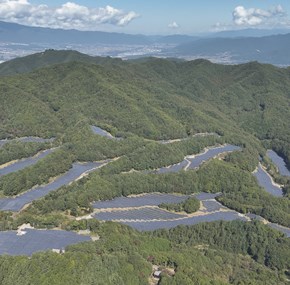Common (and costly) sources of PV yield loss – and how to avoid the
Bjarne Sønderskov, O&M manager, Obton
The pride associated with launching a new PV plant can quickly fade when the first data on the facility’s performance start to arrive. All PV projects are based on an estimated production that is the park’s theoretical annual energy production. And when the PV facility becomes operational, both operators and investors anxiously look to the actual power generated.
The facility’s first year of operation allows for calculation of the performance ratio – the difference between the estimated yield and the actual final yield. The performance ratio typically drops over time due to ageing of the PV facility, but all drops in performance should typically warrant further investigation, as an unattended inefficiency means lost yield. As an example, a 10 MW PV facility might lose as much as much as 1 percent of its output due to soil on the panels resulting in a lost production of 99.000 kWh.
Three stages of potential yield loss
There can be numerous reasons for a photovoltaic plant to be performing below expectations. The energy loss can typically happen at three different stages:
- Pre-photovoltaic losses are losses of energy caused by dust, shade, snow or reflection preventing the solar energy from hitting the PV panels.
- Panel losses are losses caused by inefficiencies or errors in the photovoltaic panels themselves
- System losses are caused by wiring, transformers, inverters and so on.
Don’t throw shade at my PV plant
Unsurprisingly, photovoltaic plants don’t perform well in the shade, but few consider just how sensitive PV panels are to shade. Research from Kipp & Zonen (producer of solar irradiation measurement instruments) estimates that hills or far shade in the horizon may result in a 4 percent loss in solar irradiance. And while hills may be hard to move there are also benefits from getting rid of shadows closer to the plant. Near shading (for example trees) may result in a 1.1 percent irradiance loss.
Much research has been done regarding production losses due to dust or dirty PV panels. Dirt especially accumulates in arid regions but even in temperate regions with regular precipitation, dirt may result in losses up to 4 percent. Therefore, cleaning of panels can be necessary. Be sure to choose your O&M partner carefully. More on this subject in this article.
White is not good
PV plants inevitably age with time resulting in dropping power output and efficiency. One very visible sign of ageing photovoltaic panels is so-called delamination. Delamination is clearly visible as milky white decolorization of the panels and results in considerable performance loss. Especially if the panels are connected in sequence with no bypass diodes, in which case even a single delaminated panel can drag an entire row of panels down.
The inverters are another critical component of PV plants where they perform the crucial task of converting the direct current (DC) to alternating current (AC) for the electricity grid. Inverters however like the plants themselves are worn with time and may result in yield losses of up to 3 percent.
Find the right local experts to avoid yield loss
Your best insurance against costly yield loss from your solar photovoltaic plant is your O&M partner. Their team of local solar PV experts will help you monitor output continually looking for anomalies that might indicate an issue that needs urgent attention.






